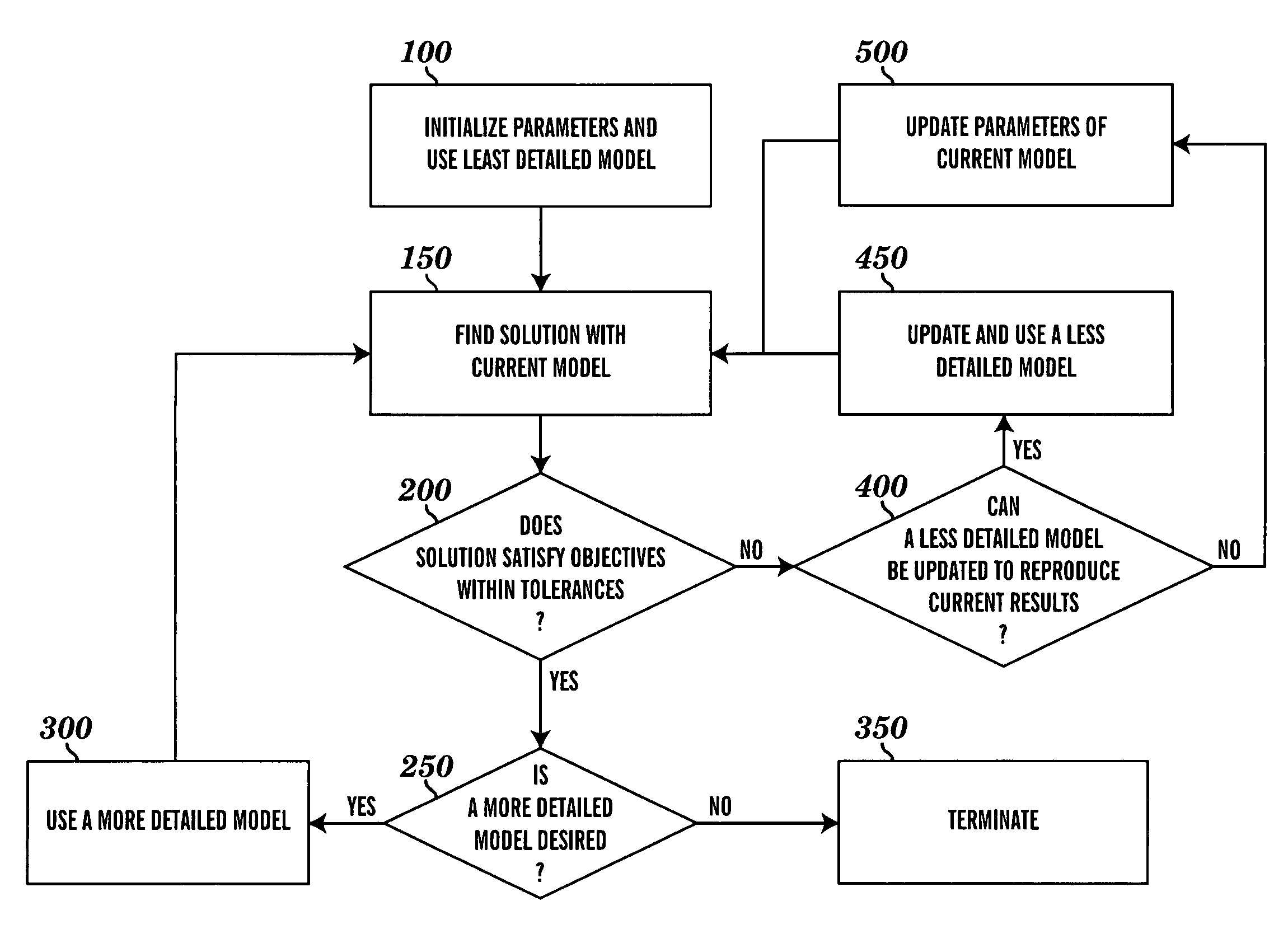Method for tuning patient-specific cardiovascular simulations
a simulation and patient technology, applied in the field of computer-assisted human anatomical and physiologic modeling system, can solve the problems of not describing time-varying hemodynamic models of various degrees of complexity, and achieve the effects of improving the fidelity of hemodynamic simulation, improving the representation of downstream vascular beds, and improving understanding of the mechanics of the circulatory system
- Summary
- Abstract
- Description
- Claims
- Application Information
AI Technical Summary
Benefits of technology
Problems solved by technology
Method used
Image
Examples
Embodiment Construction
[0014]The present invention applies computational methods to create cardiovascular simulations having desired hemodynamic features. A variety of cardiovascular modeling methods can be used to produce descriptions of time-varying blood flow and pressure in the heart and vascular networks. Numerical methods for optimization and solution of nonlinear systems of equations are used to find values for the parameters used in such models that result in simulations that match desired hemodynamic characteristics. These characteristics will often be those of the cardiovascular system of a particular subject. A variety of modeling methods are used for the same cardiovascular system such that more simplified models can be used to approximate the behavior of more detailed and complex models, which may lead to reduced computational expense. A system is created from these methods such that the user describes the desired features of the final cardiovascular simulation and provides minimal input, and...
PUM
 Login to View More
Login to View More Abstract
Description
Claims
Application Information
 Login to View More
Login to View More - R&D
- Intellectual Property
- Life Sciences
- Materials
- Tech Scout
- Unparalleled Data Quality
- Higher Quality Content
- 60% Fewer Hallucinations
Browse by: Latest US Patents, China's latest patents, Technical Efficacy Thesaurus, Application Domain, Technology Topic, Popular Technical Reports.
© 2025 PatSnap. All rights reserved.Legal|Privacy policy|Modern Slavery Act Transparency Statement|Sitemap|About US| Contact US: help@patsnap.com


